|
WWI US Army National Guard Wool Uniform -
During World War I, the U.S. Army National Guard played a crucial role in America's military efforts. Here are some key points about its involvement:
1. Mobilization and Federalization
- Before the U.S. entered WWI in April 1917, many National Guard units were already on duty due to the Mexican Border Crisis (1916-1917).
- After the U.S. declared war, the National Defense Act of 1916 allowed the federal government to draft National Guard units into the U.S. Army.
- By August 1917, most National Guard units had been federalized and were designated as divisions in the U.S. Army.
2. Formation of National Guard Divisions
Several National Guard divisions were formed and sent to France as part of the American Expeditionary Forces (AEF) under General John J. Pershing.
Some notable divisions included:
- 26th "Yankee" Division (New England)
- 27th "New York" Division
- 28th "Keystone" Division (Pennsylvania)
- 29th "Blue and Gray" Division (Virginia, Maryland, D.C., New Jersey)
- 30th "Old Hickory" Division (Tennessee, North Carolina, South Carolina)
- 32nd "Red Arrow" Division (Michigan, Wisconsin)
- 42nd "Rainbow" Division (made up of units from multiple states)
3. Combat and Contributions
National Guard divisions saw heavy combat in major battles such as:
- Second Battle of the Marne (July 1918)
- Meuse-Argonne Offensive (Sept-Nov 1918)
- Hindenburg Line Assault (Sept 1918) - 27th & 30th Divisions broke German defenses
- The 42nd "Rainbow" Division became one of the most famous units, made up of National Guardsmen from across the U.S.
Many Guardsmen were highly decorated, and some, like Sergeant Alvin York (82nd Division, which had National Guard roots), became legendary war heroes.
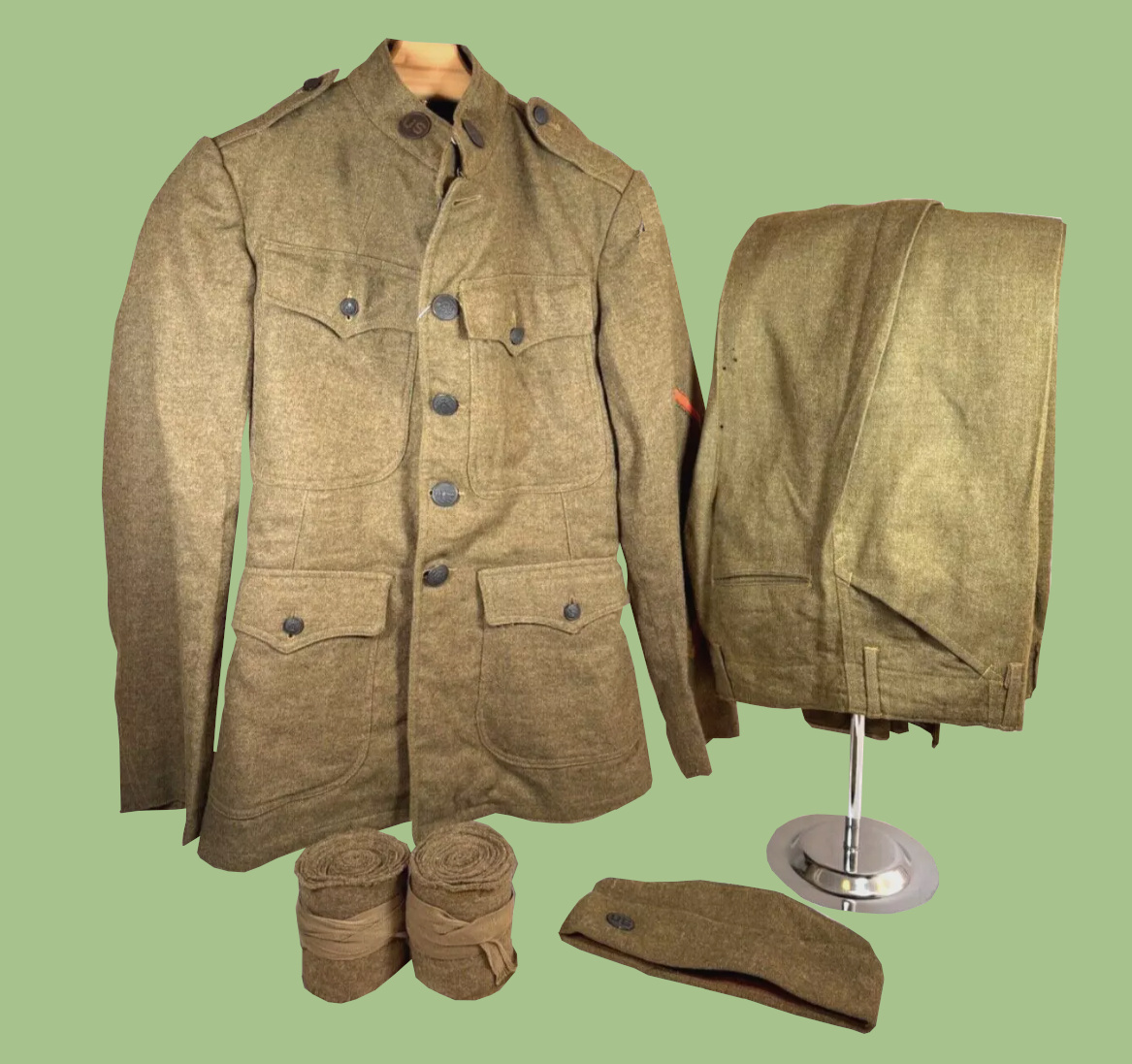
The US Army of WWI employed uniforms manufactured of two materials: Wool and Cotton. The sample
shown here is a wool uniform. This is the most widely available style.
This uniform offered better protection against the cold European winters. However, one of its
draw backs is that when it got wet it became very heavy and uncomfortable. This was a common
condition in the trenches.
The wool construction is known as the winter uniform. The cotton construction is lighter and
is knwon as the summer uniform.
WWI US SHOULDER INSIGNIA
The shoulder insignia employed during WWI was of very rudimentary construction. Quality control
was poor. Often times it was hand-made at the theater of operations.
|
The rank is for supply sergeant. The branch would usually be quartermasters. Responsible for
managing and distributing supplies, equyipment and logistics for a company or unit.
|
This is the unit patch for the 32nd infantry division which was made up of national guard units from
Michigan and Wisconsin.
|
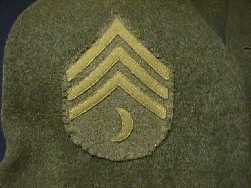 |
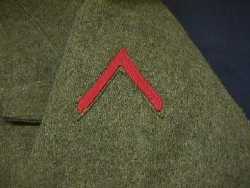 |
WWI US COLLAR TABS AND MARKINGS
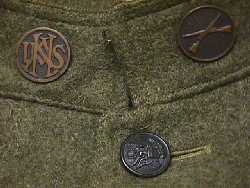
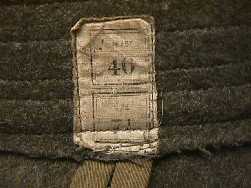
|
This page is a recognition and identification guide for WWI US military uniforms.
Multiple detailed photos of a specific sample are provided. Descriptions point out
clearly defined points that should be noted.
One of the most commonly asked questions is "How much is my WWI US uniform worth?".
A price guide is included here to address this question. The value of the uniforms is
reviewed over a period of several years. A trend can be observed. The present worth
of the American military uniforms in the collector's market is illustrated.
This service is provided free of charge to the visitor/enthusiast courtesy of
MilitaryItems.com,
a company dedicated to the preservation of military history and to providing quality
military antiques and collectibles to museums, institutions and the general public.
|
|
WWI PANTS AND MARKINGS
This is a set of winter wool pants. The bottom of the legs are tied together with a shoelace
like string. The pants are closed shut using small aluminum buttons. the face of the buttons
reads USA. All uniforms were outfitted with tags that provide information such as the
manufacturing date, depot of issue, manufacturer's name, etc. These tags are often missing
due to normal wear.
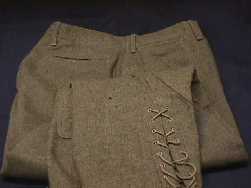
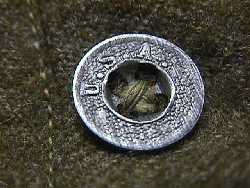
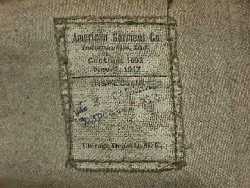
WWI US UNIFORM ACCESSORIES
The army employed leggins. These consisted of long straps of matching wool. Soldiers would
wrap them tightly around their legs, just above their boots, to provide support. This example
also shows the overseas hat.
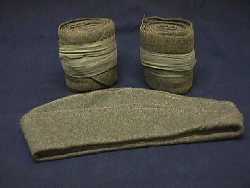
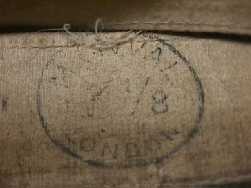
This WWI US military collectible may be currently
reproduced.
It is becoming more difficult to be able to tell the fake ones from the real ones because
the quality of the reproductions is improving. The collector must become familiarized with
the construction style and materials employed in the manufacturing of this item.
Attention to the details is critical in order to be able to determine the authenticity of
the collectible.
If you have an interest is seeing other US military uniforms of WWI, you can do so by going to our
The History of the American Military Uniform
identification and price guide.
|





